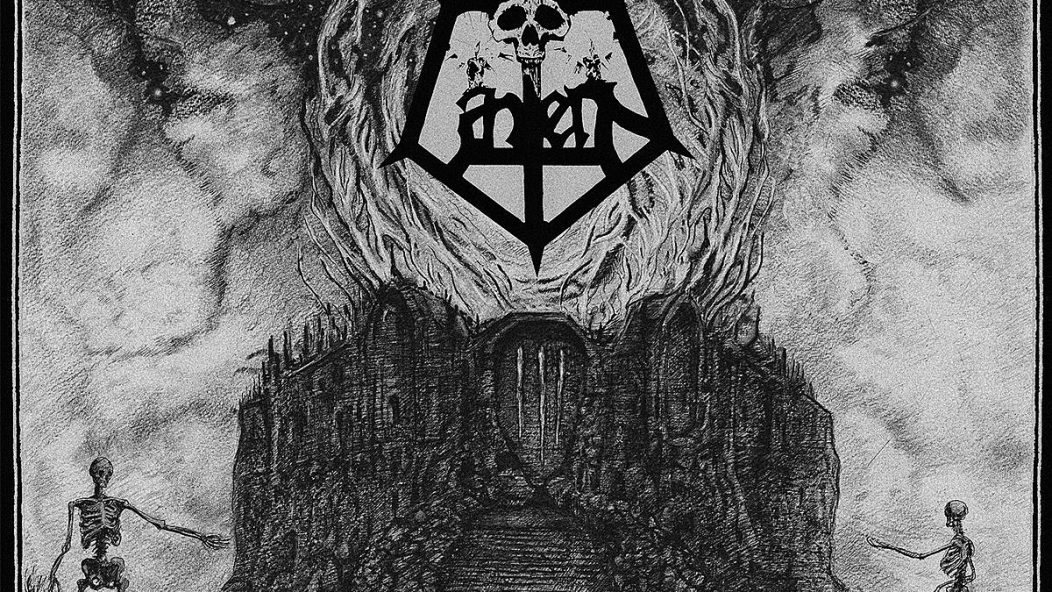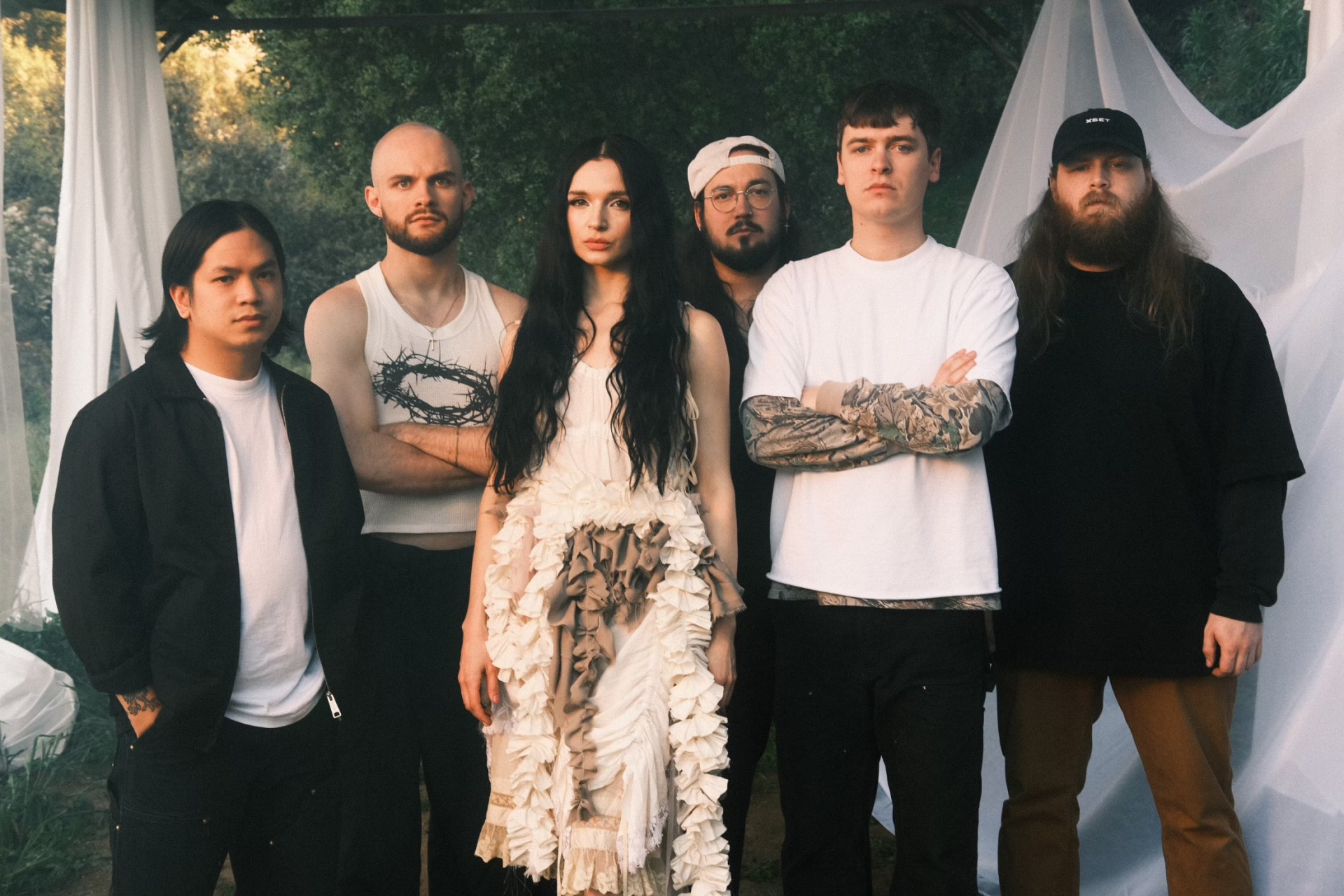
Six Death Metal Albums to Soundtrack 2020's Insane Tumult

I don’t think, at this point, that I need to belabor the point that 2020 was a challenging year for all of us. This is partly because I am more than certain you know this already.
One of the challenges that emerges in this kind of landscape, or any landscape for that matter, is giving full and proper coverage to all the records and bands that we think are worthwhile. In a normal environment, between the amount of releases that come out every week, the time it takes to properly digest them and the time it takes to write about them decently and fully, things slip through the cracks.
It’s not uncommon to discover something a month or more after it comes out only to kick yourself for not covering it when you could have — the window to fit coverage properly into an ever-shifting production window moves quickly. Add in the very real and taxing life stresses we all have been feeling over the past seven months of 2020 — things like staying on top of release schedules (themselves ever-shifting in this pandemic environment) suddenly come into competition with having very real discussions about finances and health and systemic racism and a mounting awareness of allegations and malfeasance within our subcultures and communities.
This is an attempt at redress, at least somewhat. The following six records are a small slice of the death metal we wanted to go more in-depth on this year — four hit shelves earlier this year, and two just came out recently. This is also a sequel to my list from January concerning death metal we wanted to cover more last year.
Shining light on some favorites (such as the Wilderun album Veil of Imagination, which retroactively became my favorite of the year) made me, and the rest of Invisible Oranges for that matter, feel good. So, given these circumstances, it felt only right to do another one of these roundups — it is, of course, an incomplete list, but this does not detract from the fact that these are albums worth your time. We hope you enjoy.
VoidCeremony — Entropic Reflections Continuum: Dimensional Unravel
June 26th, 2020

No album in 2020 so far better exemplifies why I enjoy doing these occasional roundups of records than Entropic Reflections Continuum: Dimensional Unravel. Like all the other records on this list, they simply fell through the cracks for me, caught between first the perennial wave of new releases from all corners and second by the abnegating psychic tide of 2020, one which rendered the pursuit of new music sometimes the furthest thing from my mind.
Like many good things in my life, though, they were recommended to me by friends in the know and also like many good things in my life, I initially ignored these nudges for reasons now lost to me. Had I looked at the fact that this group is staffed by a few current members of Ascended Dead whose 2017 release Abhorrent Manifestation was an underground hit for those looking for the more cavernous, murky, and vile wings of the world of death metal, perhaps I’d have looked into things sooner. But, foolish me, I didn’t.
…
…
To say I was thoroughly unprepared for how much I would come to love this record is a wild understatement. VoidCeremony’s debut combines two of my favorite worlds within the now very large umbrella that encompasses death metal, taking at once that same murky, avant-garde, and deeply weird wing of raw death metal as much as the more cosmically-oriented post-Atheist approach to prog death, one that keeps a frantic and unpolished edge even as the players are clearly performing advanced grad school-level calculus on their instruments.
Don’t get me wrong: I adore the hi-tech approach to heavy metal, be that Dream Theater on one end or Cynic on the other. But while groups like Necrophagist have certainly shown that that approach has power within the realms of death metal, there is still an undeniable and frankly deeply justifiable push for the more guttural, strange, and deformed sonic aesthetic shown here, one dripping with corrosive interstellar slime. There is something delightfully Borgesian about their approach to the genre, that lingering post-Lovecraftian sense of witnessing something just beyond the bounds of comprehension that gestures toward a vaster and more impossibly strange world just beyond reach.
There is a time and place for truly ignorant Neanderthal death metal, the kind where thuggish and brutal riffs reign supreme, but I always have time in my day for the more cosmically-aligned and atmospheric wing of the genre.
…
Nero di Marte — Immoto
January 24th, 2020

In the continuing theme of albums that are almost embarrassing for me to say I missed comes Nero di Marte’s Immoto from late January. In fairness, while this is their follow-up to the highly acclaimed Derivae, one of my very favorites of the year it was released, it has also been a full six years since then, a span in which it often feels like the acceleration of time’s arrow has slowed to a funereal trudge. Still, better late than never, especially for one of the very few death metal bands that can give Ulcerate a run for their money in the shockingly unpopulated field of hybrid post-metal/death metal.
…
…
Nero di Marte’s approach, as stated before, fuses a great deal of post-metal pacing and atmospherics into the world of progressive death metal, but each element of that later designation also draws from similar wells of rather different bands. Their sense of progressive metal sits comfortably next to the cinematic and very European underground sensibilities of The Ocean, having both a comparable theatricality and usage of mixed clean and harsh vocals as well as an aesthetic of elemental fury drawing largely from references both visual and sonic to the sea.
Meanwhile, Nero di Marte’s death metal has shades of the extended technique-laden but still melodically driven approach, skewing far from the post-Morbid Angel grime that characterizes most underground death metal. The post-metal basis that undergirds that arrangement and pacing of these tracks gives them a profound breadth, feeling sky-consuming or like watching continents sheaf off vast expanses of stone as they crash into the drinking deep of the sea.
Discovering this record after its release reminds me most, though, of when I found Wilderun’s Veil of Imagination after handing in my best-of lists, stumbling accidentally upon an album that has far and away become my favorite record of 2019 when it was literally just too late to announce it as such. Thankfully, I caught this one, which feels so often to me to have a sweep and grandeur somewhere between the newest Ulcerate (full review) and the debut from Sweven (full review). Anticipate Immoto showing up on my list, at least.
…
Plague — Portraits of Mind
February 14th, 2020

Plague mixes old-school death metal with massive guitar solos that feel pinched more from heavy metal than anything else. It’s a fun challenge attempting to describe their approach to melody: they are certainly no melodeath band, but likewise they also steer clear of certain production standards that are more common the grimy and atonal spaces of the genre, instead opting for a transparency and breathe in the mix more akin to thrash or more melodic types of heavy metal. The band certainly takes advantage of this by offering more thrash and melodically-driven riffs than your standard caveman and gore-dripping death metal band, even tossing a few high-minded proggy instrumental passages for good measure, but the primary basis of their sound is still a sickly and demented death metal that will be familiar to anyone who likes their death metal to feel like it emerges from a cave covered in mold or like its wailing from inside of a decaying house filled with living slime.
…
…
These juxtapositional approaches to death metal fused in Portraits of Mind make the record consistently catching. They don’t reinvent the wheel, but it’s clear Plague isn’t trying to.
The thought is to push two approaches to death metal that have over the past number of years seen themselves segregated into differing pools back into adjacency. One of the primary functions of genre revivals is specifically to bring back to the forefront certain approaches and methods to songwriting and playing that may have fallen out of favor in pursuit of more modern and cutting-edge methods. But art, aside from not being a competition, is also not a teleological enterprise, is not an arrow arcing ever and only forward.
Art is, instead, a space; more, it is a polydimensional space, a space that gives birth to spaces, like nested spheres or burgeoning dimensional snarls. Plague’s key adjustments to their post-Immolation approach to death metal is in those stretches of unabashed melody, the punched-up and lightly proggy thrashy riffs that feel akin to what Cryptic Shift are doing, and those very heavy metal solos, replete with squeals and bends that ignite a primal guitar face in anyone who’s hefted a six-string before. Toss in an irregularly distributed tendency toward sludgy half-time riffs and you have a record that will undoubtedly be satisfying to the death metal faithful.
Portraits of Mind reminds me why I love death metal so, so much, which is ultimately more important to me. Music is about joy, after all.
…
Lantern — Dimensions
July 10th, 2020

My failure to produce something fuller about Lantern’s Dimensions has nothing to do with this record itself, which is a fantastic balance of both raw death metal aesthetics and keen astute playing and arrangement choices, and everything to do with a temporary shortage of words on my part. I would sit down, day after day, press play on the record and think nothing more than, “Wow, this is really good death metal.”
True, but not necessarily something worth putting down on the page or taking up some of someone’s day with. But the album definitely deserved attention, so I would sit down diligently the next day, only to discover the same.
…
…
I have a bit more to say now. Lantern sit somewhere on that bleeding edge on Dimensions, the one where thrash, death metal, and black metal all one day split off from one another, where Hellhammer and Possessed and Bathory ruled and where Darkthrone would eventually emerge to forge black metal proper.
Lantern sometimes gets lumped in with black metal due to these little touches and, while I can follow that somewhat, they are all traits that historically belonged to death metal too, at least in its early days, before black metal split off into something properly differentiated. Their feral and primitive approach mostly comes through in tone and timbre, in the way they play their instruments with a wild percussive force, like animals; this is juxtaposed against arrangements and even the occasional tricky figure on the guitar or drums that requires a decent bit of focused dexterity to pull off, with production that gently and unobtrusively highlights those passages.
Dimensions strikes a hard balance, with some bands coming out sounding like mud and others making their reliance on direct inputs and amp emulation and digital compression a little bit too obvious. Lantern, however, pepper Dimensions‘ runtime with a couple species of songs: short and blistering, long and progressive and perpetually unfurling, and all the spaces in between. I hear from longtime fans that Dimensions is somewhat of a step down for the band, but given what’s on this record, if that’s the case then they must have psychedelic spiritually riveting masterpieces lingering somewhere in their back-catalog, because this album is an unabashed great death metal record.
…
Bedsore — Hypnagogic Hallucinations
July 24th, 2020

The last time I remember a death metal record opening up with organ was 2015’s Children of the Night by Tribulation, an album I placed at the top of my favorite albums of the last decade list. While the decade is in its infancy and I cannot pretend to be a mind reader, Bedsore’s debut certainly feels destined for best-of lists for this year at the very least. The band has a curious approach to death metal, one that at times brings them adjacent to moody progressive soundscapes before swinging toward lurid and intensely image-filled death metal. Bedsore curiously refuses to strongly intermingle their progressive passages and their more brutal and esoteric death metal ones, instead choosing to have segues connecting the approaches.
…
…
On paper, this might sound frustrating; after all, what was so compelling about the later evolution of Tribulation, for example, was precisely the way each element bled into each other until it became a singular definable whole. In practice, however, it often feels like Bedsore silos these methods so as to better sharpen their aim. The death metal portions can elevate themselves to a mighty blasphemic roar while the psychedelic proggy passages can take on a heady aroma that makes your eyes roll back into your head in lysergic ecstasy, each without diminishing or, worse, derailing the other.
The band has an approach to the progressive wing of death metal that doesn’t rely upon virtuosity or profound technicality but instead on arrangements, pacing, and atmosphere. They play with a wide dynamic arc, making their mellower and more psychedelic or proggy atmospheric passages feel more integrated than the typical pattern of a tacked on intro or outro meant to imply a kind of cerebral nature to otherwise bludgeoning death metal. For instance, in “Cauliflower Growth,” Bedsore breaks their own mid-paced pummel to descend into a viscous and cavernous organ-assisted death-doom dirge before erupting back into a vintage Leprosy-era Death groove which eventually breaks into a potent blast beat section. Meanwhile, on lengthier tracks like “At the Mountains of Madness” and “Brains on the Tarmac,” they often include long stretches of humming organ or synth, atop which float guitar notes like glowing orbs drifting aimless in the distance, summoning up an atmosphere not unlike something Poe might include as a protagonist saunters up on horseback to the decrepit aging manor of some old family line.
Death metal in specific is often so interesting to me because of its imagistic flair. This is a key element of what I look for in music in general, its propensity to induce a seemingly automatic (though almost certainly subconsciously memory-driven associative mallange) set of images.
Bedsore seemingly approaches their music in much the same way, arranging an intriguing set of lyrical gestures here, evocative titles there, and even an album name that seems indicate their preferred impressionistic state is that lingering melting world between sleeping and the wake, where bleary impossible things lurch, deform, devastate, and dwell.
…
Gulch — Impenetrable Cerebral Fortress
July 24th, 2020

And now to end with something completely different. Look up the cover of this record. Hell, look up the cover of their EP before this one (although, at eight tracks and a mere 15 minutes of runtime, Impenetrable Cerebral Fortress is practically an EP itself).
…
…
On paper, we shouldn’t let covers drive our interest in music or books or films, yeah yeah yeah; but, on the other, these are complete aesthetic packages, and there is at least a charge, some alchemical lightning, that a great image can produce. What’s best about Gulch is the correlation between that image and what’s contained on the record is absolutely inscrutable to me. Despite the title and the astounding surrealist cover that feels drawn from Mexico and Central and South America’s very particular approach to surrealism in painting and film, the music is instead some ludicrously heavy hardcore driven with scattered fragments of death metal as the added crunch.
The first 12 minutes pass by in a blur, your face contorting into more and more a rictus of brutality and rage, eyes closing tight as you envision the blessed catharsis of a wild sweat-drenched pit (the ultimate taboo in a pandemic age). And then those final three minutes come, the longest song on the track as one of the artsier and moodier pieces Converge might have on one of their albums, ending the record on an elliptic note of melancholy. It’s only a quarter of an hour long, so you can press play again, and again, and again.
Support Invisible Oranges on Patreon and check out our merch.










